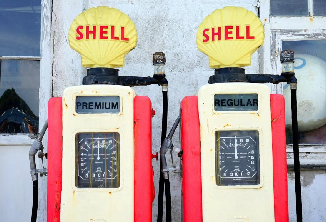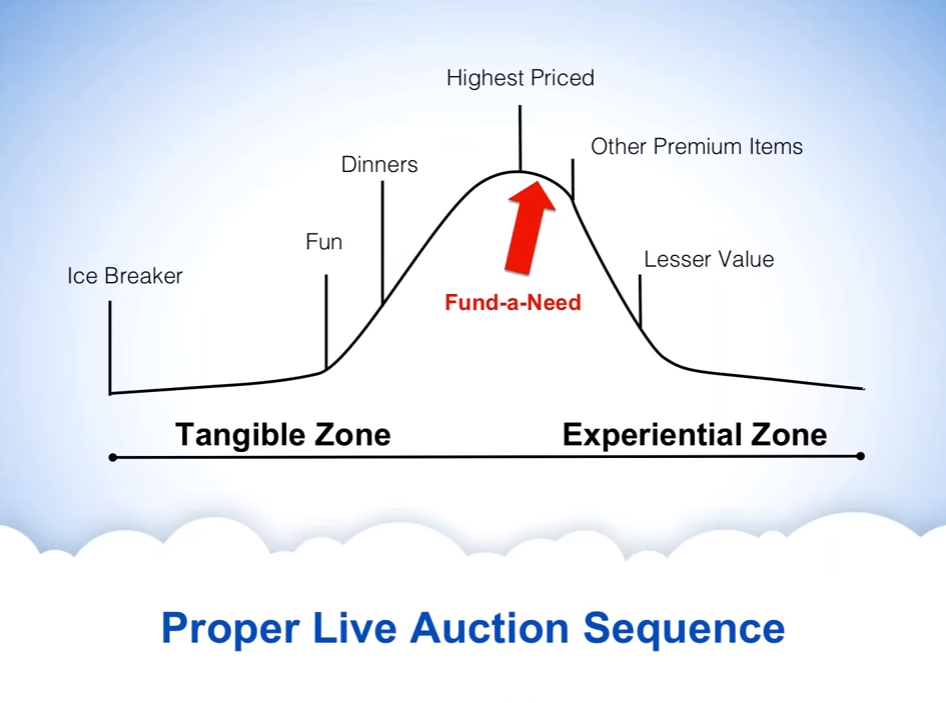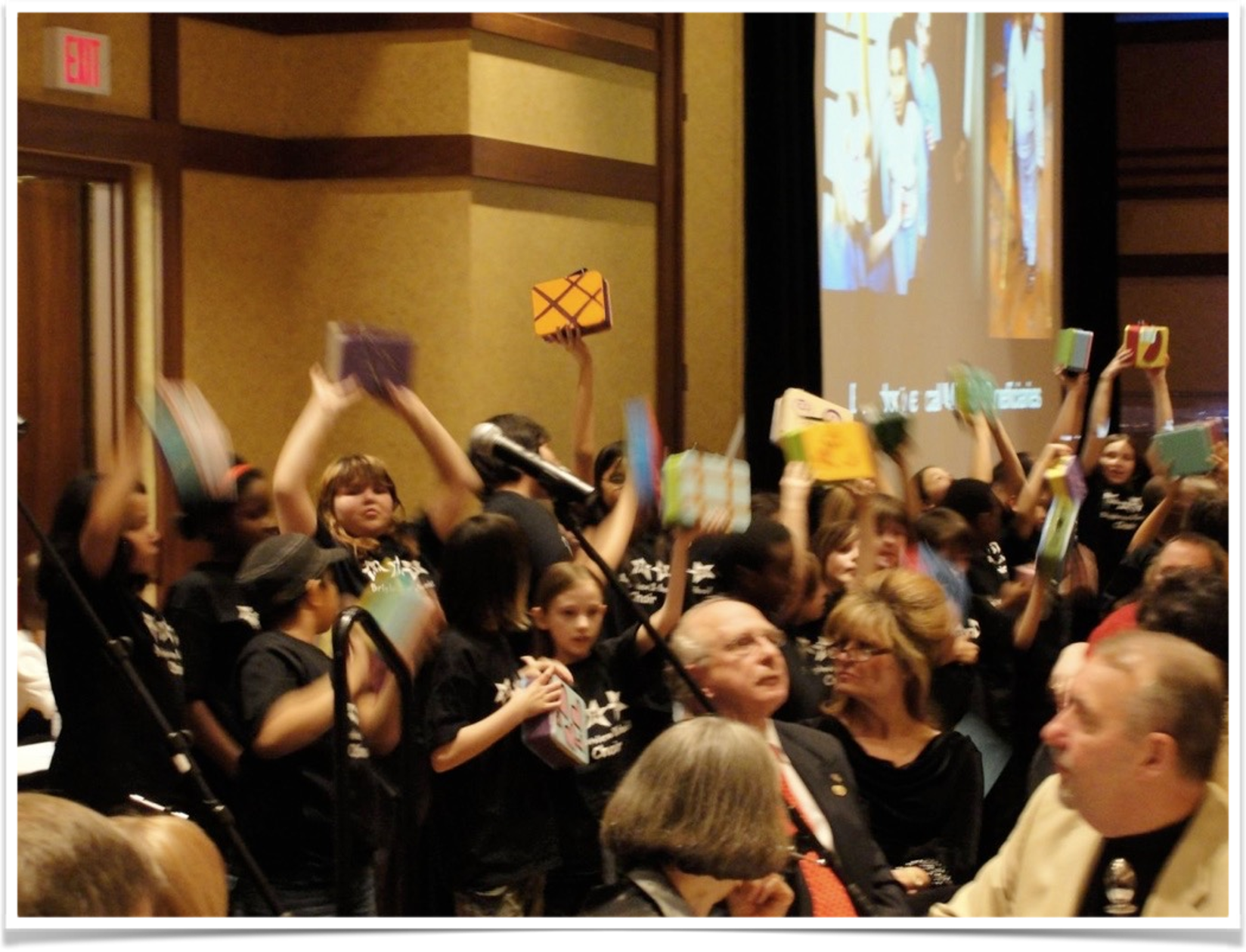Most event organizers know a big portion of the night’s proceeds comes from the fund-a-need, also commonly known as a cash appeal, special appeal or fund-a-cause.
Nonetheless, this revenue strategy can be tough to execute properly.
You may be uncertain if guests will give—after all, they have paid good money just to attend, and you want them to spend big on the auction. Or perhaps you’ve never tried something like this in the past. If the appeal falls flat, say goodbye to the night’s energy and momentum.
All that to say, it’s not easy to jump on stage and ask guests to pledge cash.
Last week we discussed the 4 crucial elements of a successful fund-a-need:
- An emotional trigger
- The “ask”
- Bid cards
- Three (3) recorders
{{cta(‘1fb67ad5-59e6-4a5a-b62d-9a7f203bec4a’,’justifycenter’)}}
While these are the 4 logistical requirements for holding a fund-a-need, there are proven best practices that will make the process even easier and more lucrative for your organization.
If you’re wondering, “Can we hold a fund-a-need without a live auction? Where would a cash appeal work best in our program? Do we have to raise funds for one item? Should we start high and go low? and more” – this post is for you.
Read on for practical tips to sidestep 10 of the most common mistakes nonprofits make when conducting funding pleas and special appeals.
1. Presenting the cash appeal at the wrong time.
Timing and sequence is important for many aspects of the auction, but none more so than the cash appeal.
Should you bring up the fund-a-need before, during or after the live auction?
This is an important question—one that’s frequently debated and ultimately up to your auctioneer.
1st Timing Factor: Emotional trigger
The best time to launch a cash appeal depends first and foremost on the inspiring and touching moments you have planned throughout the night. Where do you think your most impactful moment will be?
Check out this real-life example of an effective cash appeal with perfect timing, as told by certified benefit auctioneer specialist Danny Hooper:
“I was doing an auction for a hot lunch program for Brightview School in Edmonton, Alberta; lots of kids were coming into school in the morning on empty tummies with no lunch. We came up with the idea to have a class of 30 of the kids paint lunch boxes. I had assured the rotary club that we would be able to auction off each box at about $100 a piece.
On the night of the event, we had the school principal come up and give a very impassioned speech. There wasn’t a dry eye in the house. Then as he concluded, the 30 kids came in holding up their lunch boxes.
Just before I started to auction these, I had an idea.
‘Folks, we only have 30 lunch boxes up for auction here. Is there anybody who would consider pledging $1,000 to have their first choice of a lunch box?‘ 8 hands went up. I persisted: ‘Anybody else want to take a lunch box at $1,000?’
In all, we had 26 people come forward and take a lunch box.
That left us with 4 little kids at the end of it all, standing there holding their lunch boxes in the air. And one of the little girls started to cry. Nobody had picked her lunch box.
So I said, ‘Wow, what are the chances that the 4 prettiest lunch boxes are left at the end here? This is unbelievable that it would happen this way.’ And one woman came forward from the crowd and she picked up the last 4 boxes with a $4,000 donation.
The school raised $30,000 in just 10 minutes!“
As you can see, the timing and execution of a Fund-a-Need isn’t set in stone. It’s more important to be flexible and have someone prepared to make “the ask” once the opportunity has presented itself. (Note: This is a huge added bonus of hiring a benefit auctioneer: they are experts at spotting cash appeal moments.)
{{cta(‘212f770f-b01c-440a-8592-b2fad17e7586′,’justifycenter’)}}
2nd Timing Factor: The night’s agenda
So let’s say you have a powerful presentation, video or testimonial that you know will have the necessary impact to lead into a cash appeal. Where would be the best place to put it in the night’s program?
If your event has a live auction, there’s generally two schools of thought: You can either have the cash appeal before the big-ticket items, like Experiences, or after. Both approaches have pros and cons, so if you have multiple events in a year, you may want to experiment and see what works best with your auctioneer and audience.
Option 1: Launch the cash appeal right after the most expensive item, at the top of the bell curve.
Here on the bell curve of Live Auction sequencing, your most valuable or highest-priced live auction item is at the top of the bell curve; think a safari in South Africa, for example.
In our experience, you don’t want to put the crown jewel of your live auction last. The reason: If you have 2 or 3 bidders in the crowd waiting to all night to bid on that item and it sells to 1 person, you’ve got 2 or 3 other people with nothing else to spend that big money on.
Once that premium item is sold, you can say something like, “Folks, the incredible African safari is sold. Before we get on to the next items, we’d like to take a short minute to do our fund-a-need or cash appeal. To kick that off, I direct your attention to the screens for a short video.”
A cash appeal up at the top of the bell curve, right behind the most expensive item or two, can help capture some of that money, plus utilize the momentum in the room.
Click here to view a video explanation of the best time to conduct a Fund-a-Need in this recording of our recent webinar, “Ask an Auctioneer.”
Option 2: Launch the cash appeal before the live auction.
Some auctioneers prefer opening up the night with a cash appeal. Placing the Fund-a-Need up front ensures everyone’s fullest attention is on the special appeal, plus makes the cash appeal the centerpiece of the night, rather than a strategy to get “leftover” funds.
For more on the pros and cons of placing the special appeal before, during or after the live auction, see:
{{cta(’56ae81ff-c249-4832-ba73-826dca88aca6′,’justifycenter’)}}
2. Using an emotional trigger that’s too depressing, long or otherwise negative.
When looking for the big emotional trigger, take care not to let cash appeals turn into killjoys – think a speaker going off the rails, a video that’s 10 minutes long, or an uncomfortable sob story.
You certainly want to utilize videos, testimonials and speeches that tug at the heartstrings. However, a charity auction or gala is meant to be a fun night out! Overly sentimental triggers can go from rallying cries to permanent momentum-killers…totally deflating the rest of your event.
To do: Make sure speakers stick to their allotted time frame (no more than 5 minutes) and approved presentations (no weepy, angry rants here). A speech can be moving and encourage participation without resorting to guilt.
It’s important to coach the night’s speakers on striking the right balance. Offer gentle feedback if you see their speech veering too far off course.
{{cta(‘d675b980-d4e7-44c8-a495-9f5f62c535aa’)}}
3. Forgetting to “prime the pump.”

Before the event
While most purchases in an auction will undoubtedly be impulse buys, the more you can market a cash appeal in advance, the less surprised and more prepared guests will be to pledge cash. This is the same reason that we advise advertising silent and live auction items, particularly premium items like travel Experiences, early on.
Before the event, contact your biggest supporters to determine who would be willing to contribute to the special appeal and at what amounts. This will give you an idea of how much money you’ll need from the rest of your audience to meet your goal, plus guide the lower giving increments you’ll set.
Night of the event
On the night of the event, you might approach a long-time donor privately and say, “Mr. and Mrs. Smith, we know you’re great supporters of our hospital foundation. We are planning to have a cash appeal for baby incubators tonight. Would you consider contributing? If so, can we count on you to put your hand up first when the auctioneer starts?”
Elsewhere, you can highlight the fund-a-need in your program or make a separate display explaining the need.
If you can get commitments in advance, tell your auctioneer. Knowing hands will go up right when they make the ask makes timing a whole lot easier and creates the momentum needed for success.
4. Raising money for “general funds” without actually funding a need.
In general, attaching the cash appeal to a particular need or initiative (like a new playground, specialized medical equipment, a fund set aside for veteran housing) has greater success than simply asking for general funds.
Why? Sharing a specific monetary goal taps into people’s competitive nature and the joy of accomplishing a goal as a team. You want to create a finish line in donors’ minds so they know they’re contributing to a real and urgent cause, and their gift will have immediate impact.
And if someone happens to underwrite a big portion of the expense, find a way to present the need as a goal without a ceiling (so donors aren’t tempted to change their giving based on others’ contributions).
5. Choosing the wrong starting amounts.

To determine the best possible starting position for your fund-a-need, think of the item you’d like to fund and the monetary goal.
Suppose you’re hosting a gala for a hospital foundation and raising $20,000 for new baby incubators. You (or whoever is leading the cash appeal) can start by saying, “Would anyone underwrite the entire investment to purchase the entire incubator?” This may sound outrageous, but you don’t know unless you ask. Lots of times there are business people, philanthropists and supporters who will support an entire incubator.
After the starting amount, work your way down to the lowest donation increments. To set these increments, use your discretion. Consider what you’re raising the money for, and what donations you can reasonably expect from your audience.
6. Having the long-winded hospital administrator, shy board member or otherwise unqualified person make the ask.
The actual “ask” of the cash appeal should fall ideally to a benefit auctioneer. If not, your emcee or perhaps a media personality can fill in. The speaker should be comfortable talking in front of crowds and passionate about the cause. They also need to be briefed on your strategy for incrementally decreasing giving levels.
7. Skipping the cash appeal altogether when there’s no live auction.
The easiest way to ruin a fund-a-need: not having one altogether! Gathering your most involved supporters together in the same place and not asking to fund the cause is a major missed opportunity.
While we have gone over the 4 requirements of a successful cash appeal in a live auction (such as bid cards and recorders), funding pleas are by no means limited to one type of event. You’ll simply need a different method of recording pledges other than bid cards.
Asking people to “crowdfund” a specific cause or item need not take place in the context of an auction.
8. Neglecting tax receipts.

Promoting tax deductible gifts sometimes will influence people to give a little more generously.
9. Not announcing the total raised at the end of the night.
Donors are always curious about the total raised. If you met or exceeded the goal, be sure to share and celebrate this information with the guests. And even if you don’t 100% reach the goal, they’ll likely be impressed at the amount regardless.
Even better—if you’re within striking distance of the goal, let people know you’re still accepting donations at the checkout table and online. This can inspire enough additional donations to take you across that finish line.
10. Not downloading the Fund-a-Need Handbook for more free ideas.
We have plenty more ideas and tips for successful fund-a-needs! Click below to download the Fund-a-Need Handbook. Every download comes with a free cash appeal recording form template, designed to make it easy for your recorders to jot down totals on the fly.
{{cta(‘d675b980-d4e7-44c8-a495-9f5f62c535aa’)}}
Your turn – Do you use cash appeals at your fundraising events? What have you seen work well and work poorly? What kinds of fund-a-need needs does your audience respond to? Share your advice with thousands of fundraising pros and volunteers in the comments below.




